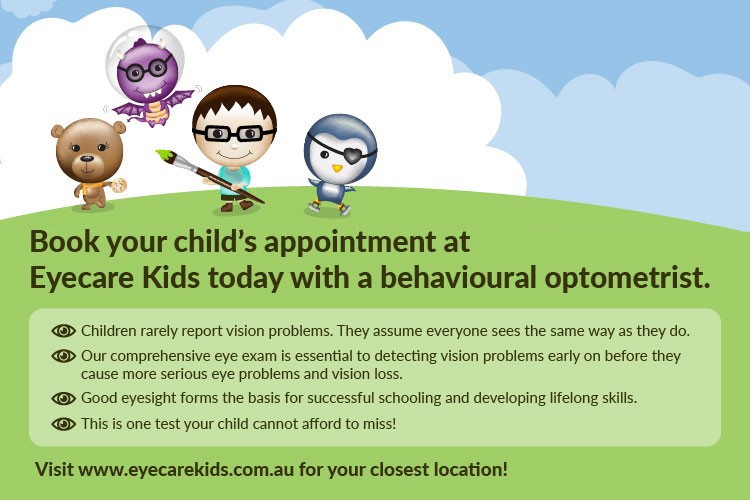Jonathan gets his learning back on track
Jonathan, 7 years old, a local from Rosebery was having difficulties with reading, writing and spelling, but after a tailored vision therapy program, and some extra help at school, Jonathan’s schooling is back on track.
Vision therapy can help children with tracking, focusing and teaming problems as well as lazy and eye turns, which are common visual problems in children. It involves teaching the patient to consciously become aware of how they are using their eyes through a series of therapy activities.
Jonathan’s mother, a teacher at a local school, was concerned with letter and number reversals, untidy writing, trouble copying from board to book, poor recognition of words and poor reading comprehension. She decided to take her son along to a behavioural optometry practice for a vision assessment to establish whether Jonathan’s vision was affecting his learning abilities.
Behavioural Optometrist, SooJin Nam, recognised that Jonathan’s overall vision was good, but that he had reduced eye movements and had difficulties with visual spatial skills and visual analysis skills – aspects of vision information processing abilities.
Behavioural Optometry is a branch of optometry that holistically assesses vision as both ‘sight’, as well as the ability to ‘understand and interpret what is seen by the eyes’. In this case, although Jonathan could see very clearly, he had poor eye movement skills, which meant he had difficulty controlling the movement direction and navigation of his eyes, leading to difficulty following a line (for example in writing) and also difficulty copying from the board. This, in turn, would impact his comprehension, reading fluency and copying skills. His visual spatial and visual analysis skills were also reduced.
Visual spatial skills relates to the ability of one to understand their spatial environment – where things are around them and this relies heavily on the understanding of laterality and directionality. For example, one can see clearly the letter ‘b’ and ‘d’. However, to the child who doesn’t understand directionality and has poor visual spatial skills, a ‘b’ is perceived to be the same as ‘d’ as they both have the same components (stalk and circle), however, one is on one side of the stalk and the other is on the opposite side of the stalk. If this skill is poor, a child will experience great difficulty with letter/word/number reversals in reading and writing.
Eye tracking is the ability to keep the eyes on target when looking from one object to another, moving the eyes along a printed page, or following a moving object like a thrown ball. Poor eye movements contribute to loss of place when reading.
Visual Analysis is the ability to understand the relationship of parts to wholes. This is exactly what a child has to do when they look at letters. To distinguish an m from an n, the shape of the letter has to be analysed into parts. In mathematics, a child must analyse into separate parts before they can count them.
SooJin Nam, recommended some vision therapy training, which helps retrain his eye tracking as well as improve his visual spatial and analytical skills. The activities are easy to do and are done regularly to reinforce their understanding.
Since Jonathan started his vision therapy sessions, Jonathan’s mother has seen a significant improvement in his ability to read, decode and comprehend. He has gone up from a Level 8 in reading to a Level 17 in one school term (an amazing feat in any sense), and is much happier at school.
Jonathan’s mother said, “We have seen a great improvement. He has only been doing the vision therapy and getting a little bit of extra help at school and so we can safely say that the vision therapy work has definitely helped his progress at school.”
Optometry Australia recommends that children have a full eye examination with an optometrist before starting school and at least every two years thereafter. Eye examinations usually attract a Medicare rebate and no referral is required.

